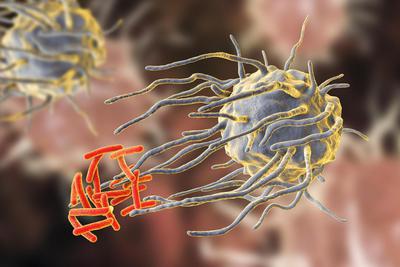How Often Do You Need a TB Test?
Tuberculosis (TB) is a contagious, infectious disease that affects the lungs and spreads through tiny droplets when an infected person sneezes, coughs, or talks. An estimated one-quarter of the population will become infected with TB, and of those infected, 5 to 10 percent develop active TB at some point in their lifetime. Because TB is highly transmissible, employers should offer routine TB screening and testing for their employees, especially in larger industries, to prevent transmission of this potentially fatal disease.
Listen to article

What is a TB Test?
To check for the presence of Mycobacterium Tuberculosis, the name for TB bacteria, both TB skin tests and TB blood tests are available.
These TB tests do not verify if a positive test is an active or latent TB infection, and further TB screening might be required. In addition to a TB PPD skin test or blood test, screening may include a chest x-ray, a questionnaire of signs and symptoms, and a sputum sample.
Active vs. Latent TB
Active TB is contagious and causes infections, mainly in the lungs. Sometimes, TB affects other areas of the body as well.
Latent TB is not contagious, and people with latent TB do not experience symptoms and cannot transmit the bacteria to another person. People with latent TB may eventually develop active TB.
TB is treatable with early diagnosis and the proper medication, so early detection is crucial.
Different types of TB tests
There are two types of TB tests: TB skin and blood tests. Healthcare professionals administer both tests. The TB skin test requires a follow-up visit to assess the result. Blood tests are sent to a laboratory for analysis and require no follow-up appointments.
PPD TB Skin Test
For TB skin testing, a small number of TB proteins are injected under the top layer of skin on the arm. The proteins used are called purified protein derivatives (PPD), so TB skin tests are also referred to as PPD tests.
The skin reacts to these proteins for someone previously exposed to TB, forming a solid red bump at the injection site within about two days from receiving the injection.
A positive PPD skin test cannot determine how long an individual has had TB or if the TB infection is inactive (not transmissible) or active (contagious).
Occupational health services in many industries offer a series of two PPD skin tests, with the second test taken 7-21 days after initial TB screening. Employees with a previous positive TB test, new hires, and new employees without a documented TB test should receive two skin tests to rule out a false positive TB test.
TB Blood Test
A TB blood test is also known as IGRA (interferon-gamma-release assay) and uses blood to test for the presence of Mycobacterium Tuberculosis. Like PPD TB skin tests, TB blood tests do not determine whether the bacteria are active or inactive.
Two FDA-approved TB blood tests are the QuantiFERON® -TB Gold Plus and the T-Spot®.TB test (T-Spot test). These blood tests do not require follow-up visits for negative results.
Frequently Asked Questions
What Are the Symptoms of Active TB?
Active TB is highly contagious, generally attacking the lungs and sometimes other organs in the body. TB symptoms include cough, fever, night sweats, weight loss, coughing up blood, and chest pain.
How Often Should You Have a TB Test?
Large industries, such as healthcare, should test new hires for TB. Employers must immediately report positive TB test results to the local health department, and treatment for latent TB infections is encouraged. Annual TB screening is not necessary except for in cases of known exposures or ongoing transmission.
Repeat TB tests would not cause harm unless the employee reacted negatively to the TB skin test.
The CDC recommends that healthcare facilities consider annual TB screening for healthcare workers like physicians and respiratory therapists, who are at increased risk for TB exposure, and employers who work in areas where TB transmission has previously occurred, like the emergency department. TB screening includes a physical exam and screening for symptoms of TB (cough lasting more than three weeks, unexplained weight loss, night sweats, fever).
Who Should Get a TB Test?
People at high risk for TB should get tested, although TB testing is safe for anyone. High-risk individuals include: someone that's been around someone else with TB disease, people with weakened immune systems or HIV infections, someone experiencing the symptoms of TB (including weight loss, fever, night sweats, and cough), anyone who traveled to a country where TB disease is common, illegal drug users, anyone working in a healthcare setting like a hospital, nursing home, emergency medical services, and homeless shelter clinics and anyone working in correctional facilities.
Do Employers Require TB Tests?
The employer decides to participate or not participate in TB screening. However, OSHA requires certain employers to make TB testing available to their employees. Industries that must offer TB testing include healthcare facilities, correctional facilities, and other large industries where employees "share the air" and TB could be transmitted.
Where and How Can I Get a TB Test?
TB testing is obtained at a clinic or through workplace occupational health services. Skin tests are performed on-site, with a follow-up visit. For TB blood tests like the QuantiFERON-TB Gold Plus and the T-Spot test, a lab analyzes the results.
Health Street partners with occupational services, providing a single blood draw at one of our clinics, with no follow-up visit necessary.





